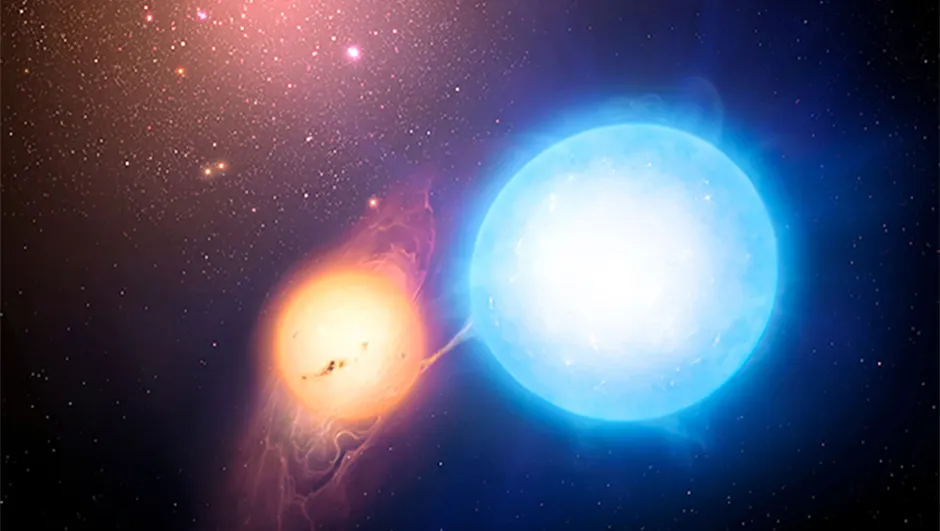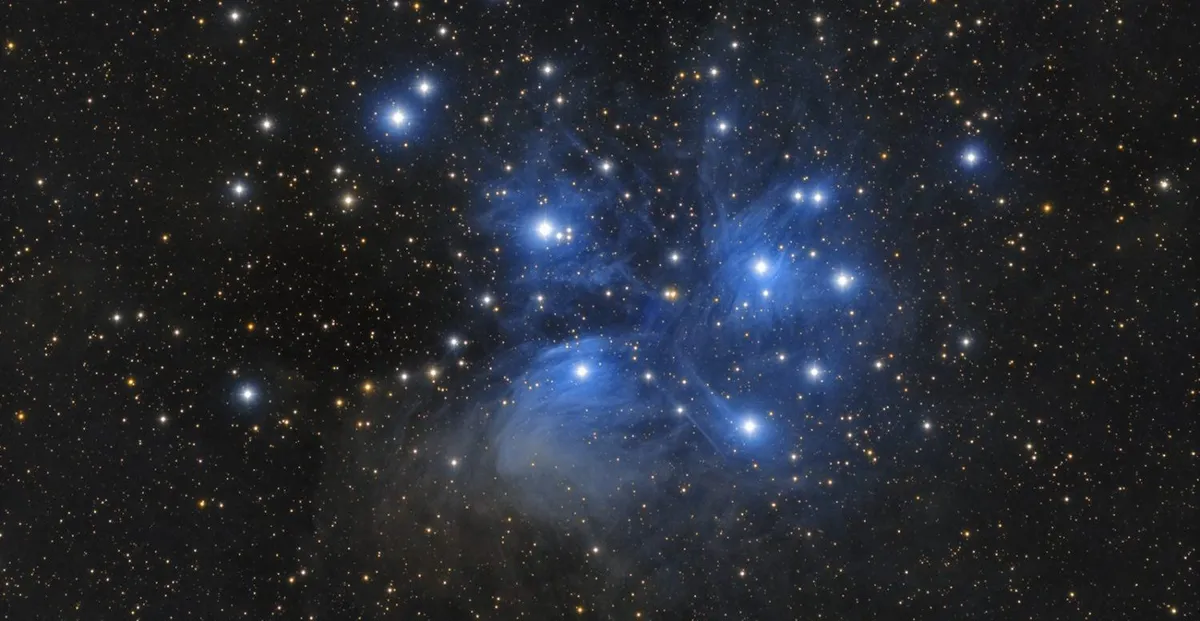From my first sight of Albireo through a telescope, with its blue and yellow components, I’ve always been fascinated by binary stars. They’ve always seemed
to me too fragile an arrangement to survive.
That instinct isn’t wrong; all but the closest and most tightly bound binaries are vulnerable to being pulled apart by gravitational interactions with passing stars or their surroundings.
We know that binary stars are common – nearly half of solar-type stars are in pairs, with half of those being separated by more than 100 Astronomical Units (where 1 AU is the Earth to Sun distance), and hence vulnerable to disruption.
If these systems are indeed easily disrupted by interactions, we should expect more of them when we look at younger populations, such as those in open clusters.
Read more from Chris Lintott:

A paper by Niall Deacon (Max Planck Institute for Astronomy) and Adam Kraus (University of Texas at Austin) looks at double stars within some well-known open clusters, to see how they are holding up.
The clusters studied in the paper include some of the most famous and familiar in the sky, but the authors use the latest data and techniques.
The team looked through the data from ESA’s Gaia mission in order to identify members of the Pleiades, Beehive and Alpha Persei clusters.
Gaia’s ability to provide information on how stars are moving is critical here. Stars that move together can be identified as cluster members, rather than interlopers that just happen to lie in the same part of the sky.
This technique identifies large numbers of cluster stars; over a thousand for the Pleiades and Beehive, and 815 for Alpha Persei, and the information on how stars move can be even more useful.
Stars in binaries – even wide binaries – should be moving together through space, and the precision of the Gaia measurements is such that such associations stand out from the collective motion of the cluster.
Think about finding groups of friends in a crowd; the crowd may all be moving in the same direction, but you can spot groups by the fact they move together.

In each case, between 2–3% of stars turn out to be in wide binaries, a number that is noticeably lower than for stars which do not lie in such clusters.
This makes sense. Stars formed within the dense environment of a cluster like these are much more likely to suffer a close interaction with a neighbour. Stars jostle within the cluster itself and such encounters seem to have the effect of disrupting binaries.
It’s especially telling that the fraction of binaries is lower in the known clusters than in objects called young moving groups.
These loose agglomerations of stars travel together across the sky and probably represent the result of star formation in lower density environments – where encounters will be less common and thus where binaries can live relatively unmolested lives.
The authors also make a comparison to a group of young stars known as the Pisces-Enceladus stream, which is the same age as the Pleiades.
The difference in their number of binaries seems to confirm that – at least for wide binaries – it’s not how old you are that matters, it’s where you were born.
Chris was reading Wide binaries are rare in open clusters by NR Deacon and AL Kraus.
This article originally appeared in the August 2020 issue of BBC Sky at Night Magazine.

